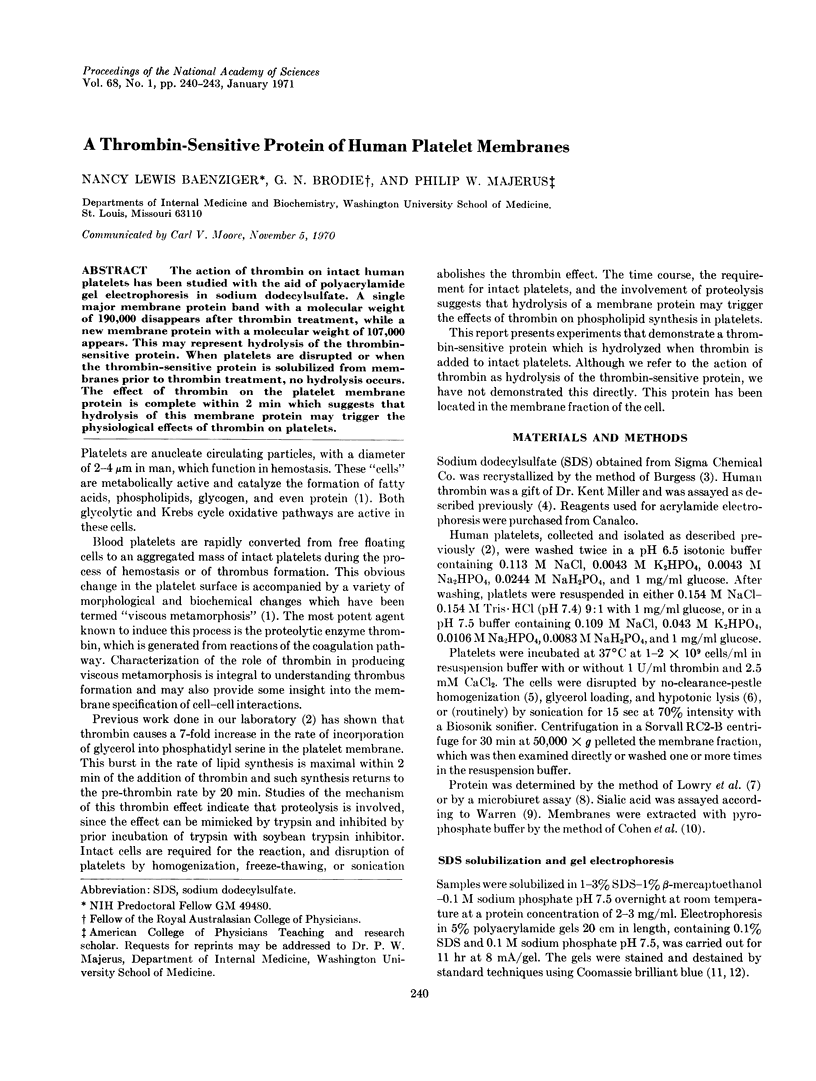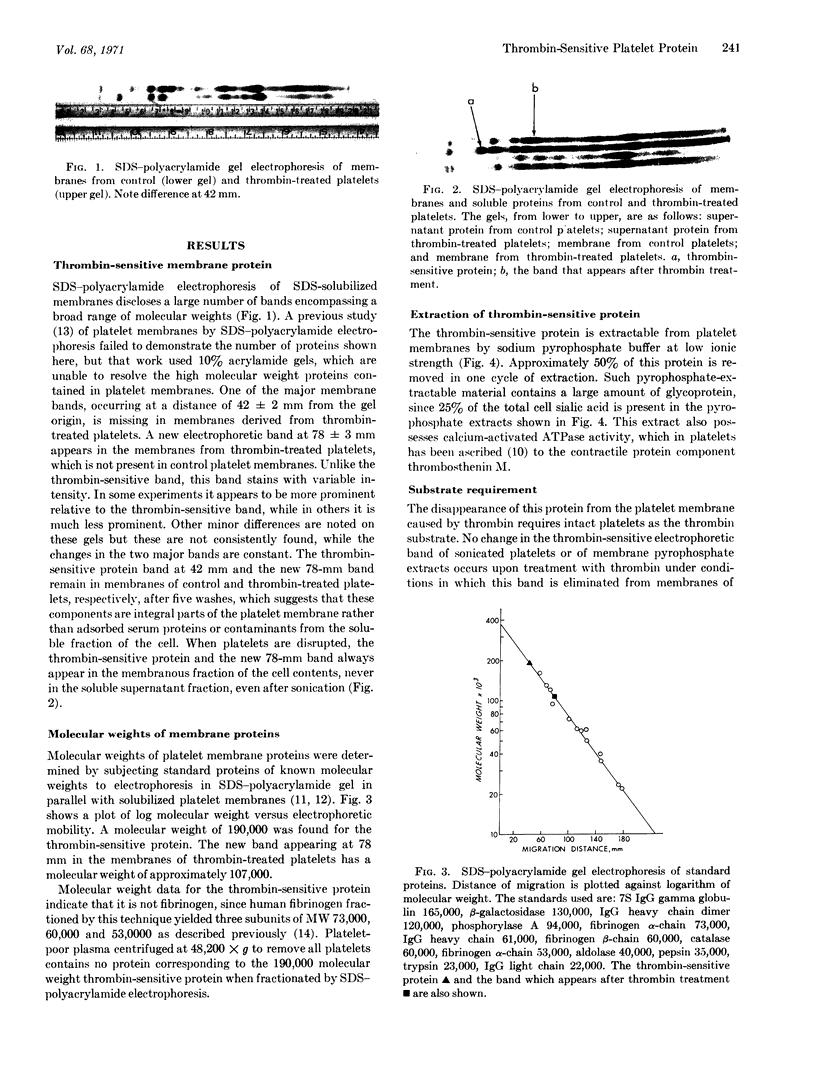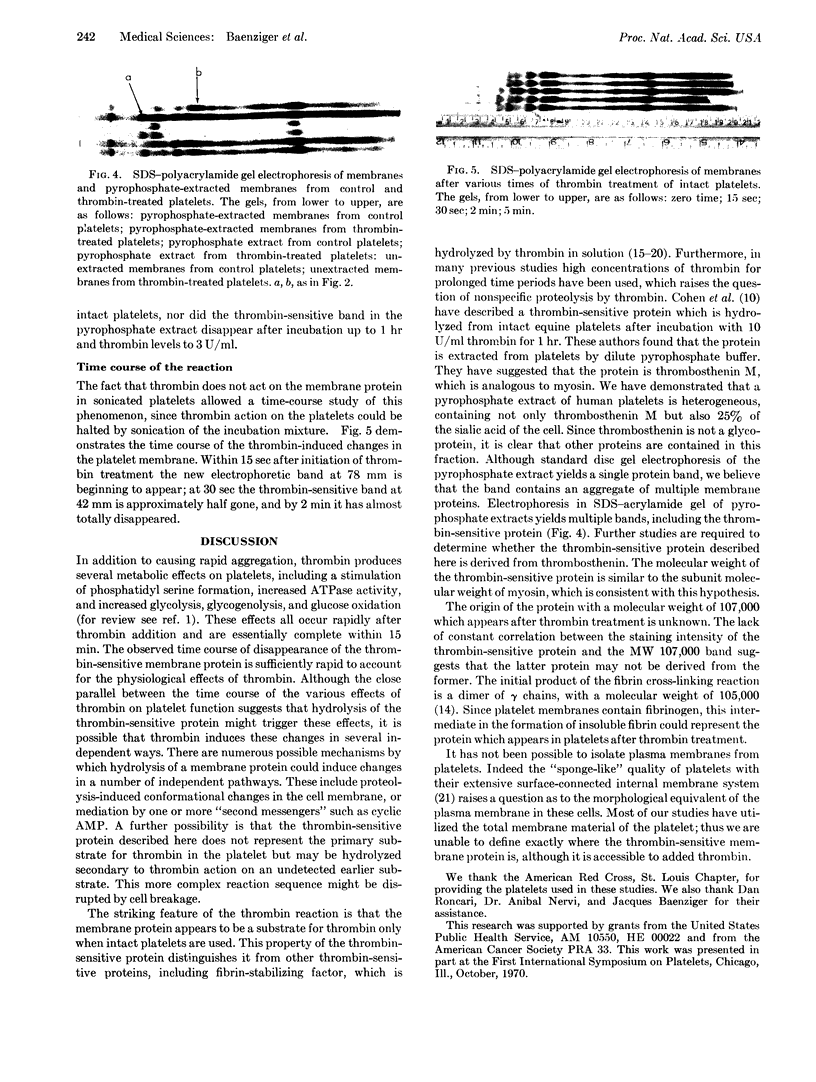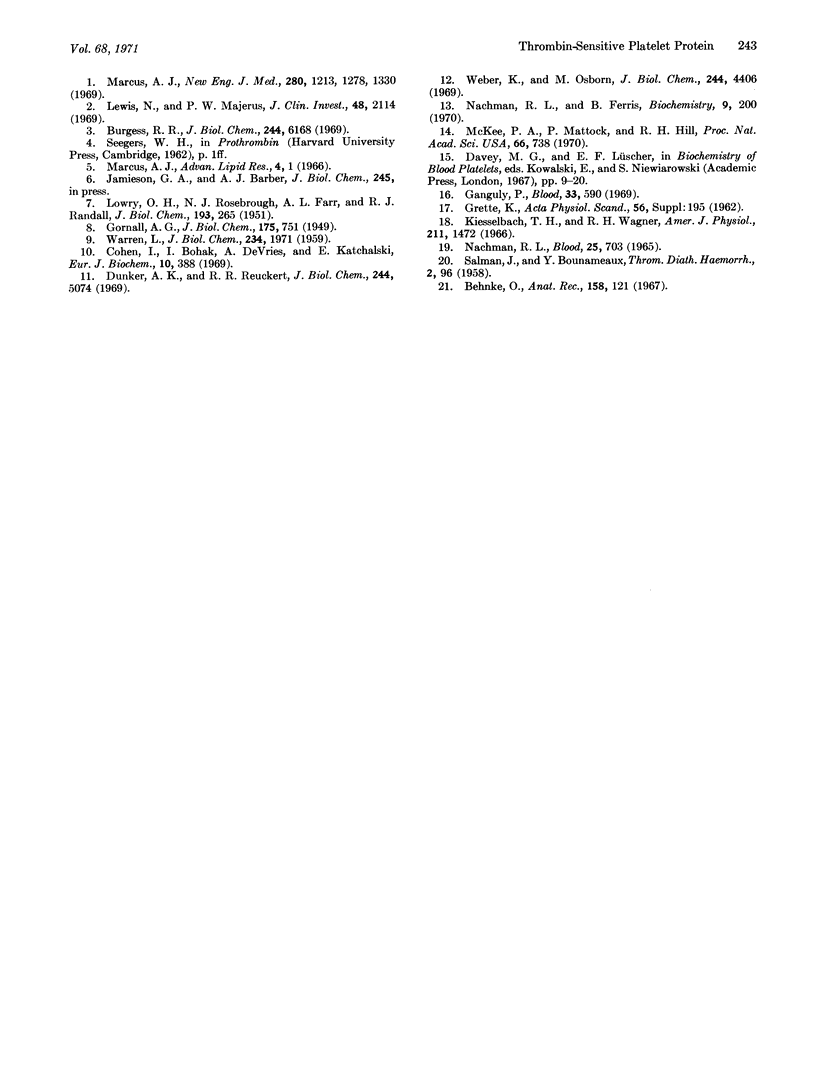Abstract
The action of thrombin on intact human platelets has been studied with the aid of polyacrylamide gel electrophoresis in sodium dodecylsulfate. A single major membrane protein band with a molecular weight of 190,000 disappears after thrombin treatment, while a new membrane protein with a molecular weight of 107,000 appears. This may represent hydrolysis of the thrombin-sensitive protein. When platelets are disrupted or when the thrombin-sensitive protein is solubilized from membranes prior to thrombin treatment, no hydrolysis occurs. The effect of thrombin on the platelet membrane protein is complete within 2 min which suggests that hydrolysis of this membrane protein may trigger the physiological effects of thrombin on platelets.
Full text
PDF



Images in this article
Selected References
These references are in PubMed. This may not be the complete list of references from this article.
- Behnke O. Electron microscopic observations on the membrane systems of the rat blood platelet. Anat Rec. 1967 Jun;158(2):121–137. doi: 10.1002/ar.1091580203. [DOI] [PubMed] [Google Scholar]
- Burgess R. R. Separation and characterization of the subunits of ribonucleic acid polymerase. J Biol Chem. 1969 Nov 25;244(22):6168–6176. [PubMed] [Google Scholar]
- Cohen I., Bohak Z., De VriesA, Katchalski E. Thrombosthenin M. Purification and interaction with thrombin. Eur J Biochem. 1969 Sep;10(2):388–394. doi: 10.1111/j.1432-1033.1969.tb00702.x. [DOI] [PubMed] [Google Scholar]
- Dunker A. K., Rueckert R. R. Observations on molecular weight determinations on polyacrylamide gel. J Biol Chem. 1969 Sep 25;244(18):5074–5080. [PubMed] [Google Scholar]
- Ganguly P. Studies on human platelet proteins. II. Effect of thrombin. Blood. 1969 Apr;33(4):590–597. [PubMed] [Google Scholar]
- Kiesselbach T. H., Wagner R. H. Fibrin-stabilizing factor: a thrombin-labile platelet protein. Am J Physiol. 1966 Dec;211(6):1472–1476. doi: 10.1152/ajplegacy.1966.211.6.1472. [DOI] [PubMed] [Google Scholar]
- LOWRY O. H., ROSEBROUGH N. J., FARR A. L., RANDALL R. J. Protein measurement with the Folin phenol reagent. J Biol Chem. 1951 Nov;193(1):265–275. [PubMed] [Google Scholar]
- Lewis N., Majerus P. W. Lipid metabolism in human platelets. II. De novo phospholipid synthesis and the effect of thrombin on the pattern of synthesis. J Clin Invest. 1969 Nov;48(11):2114–2123. doi: 10.1172/JCI106178. [DOI] [PMC free article] [PubMed] [Google Scholar]
- Marcus A. J. Platelet function (third of three parts). N Engl J Med. 1969 Jun 12;280(24):1330–1335. doi: 10.1056/NEJM196906122802405. [DOI] [PubMed] [Google Scholar]
- Marcus A. J. The role of lipids in blood coagulation. Adv Lipid Res. 1966;4:1–37. [PubMed] [Google Scholar]
- McKee P. A., Mattock P., Hill R. L. Subunit structure of human fibrinogen, soluble fibrin, and cross-linked insoluble fibrin. Proc Natl Acad Sci U S A. 1970 Jul;66(3):738–744. doi: 10.1073/pnas.66.3.738. [DOI] [PMC free article] [PubMed] [Google Scholar]
- NACHMAN R. L. IMMUNOLOGIC STUDIES OF PLATELET PROTEIN. Blood. 1965 May;25:703–711. [PubMed] [Google Scholar]
- Nachman R. L., Ferris B. Human platelet membrane protein. Biochemistry. 1970 Jan 20;9(2):200–205. doi: 10.1021/bi00804a002. [DOI] [PubMed] [Google Scholar]
- WARREN L. The thiobarbituric acid assay of sialic acids. J Biol Chem. 1959 Aug;234(8):1971–1975. [PubMed] [Google Scholar]
- Weber K., Osborn M. The reliability of molecular weight determinations by dodecyl sulfate-polyacrylamide gel electrophoresis. J Biol Chem. 1969 Aug 25;244(16):4406–4412. [PubMed] [Google Scholar]






